State Department preparing to advise Americans not to travel abroad amid coronavirus pandemic – CNNPolitics
This content was originally published here.
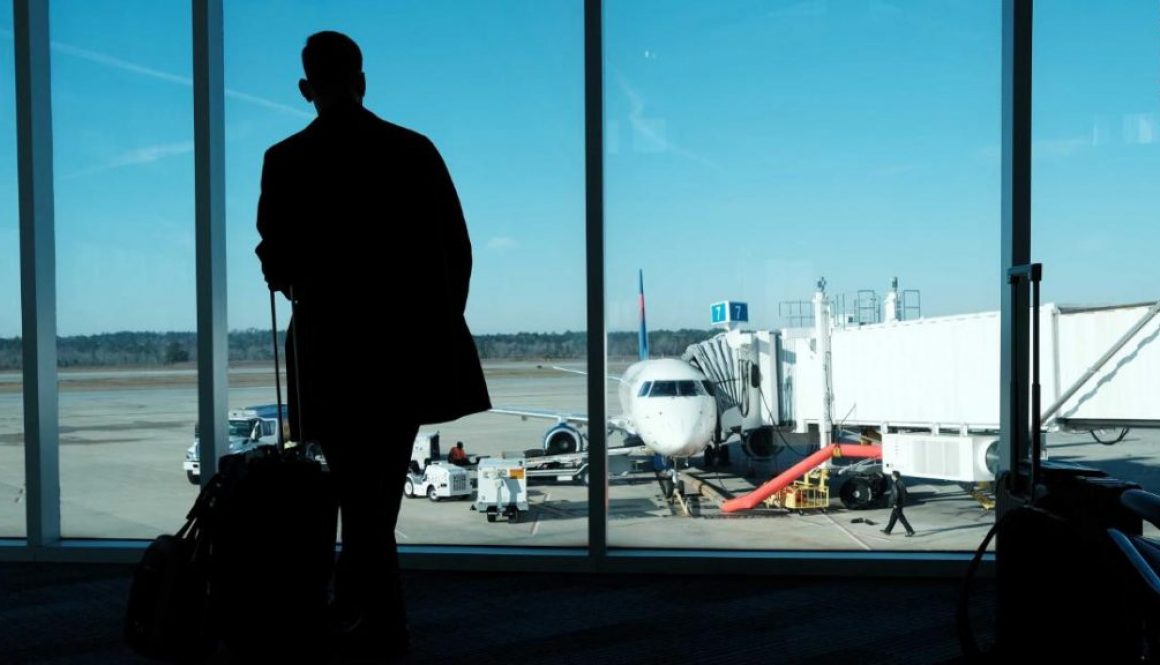
This content was originally published here.
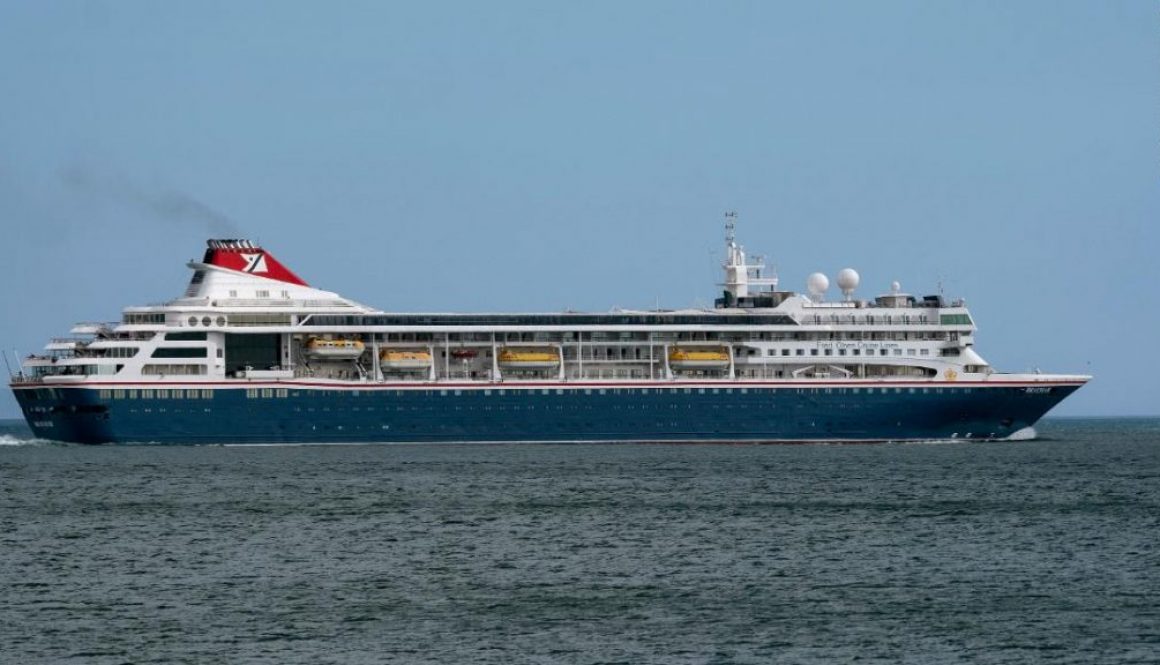
This content was originally published here.
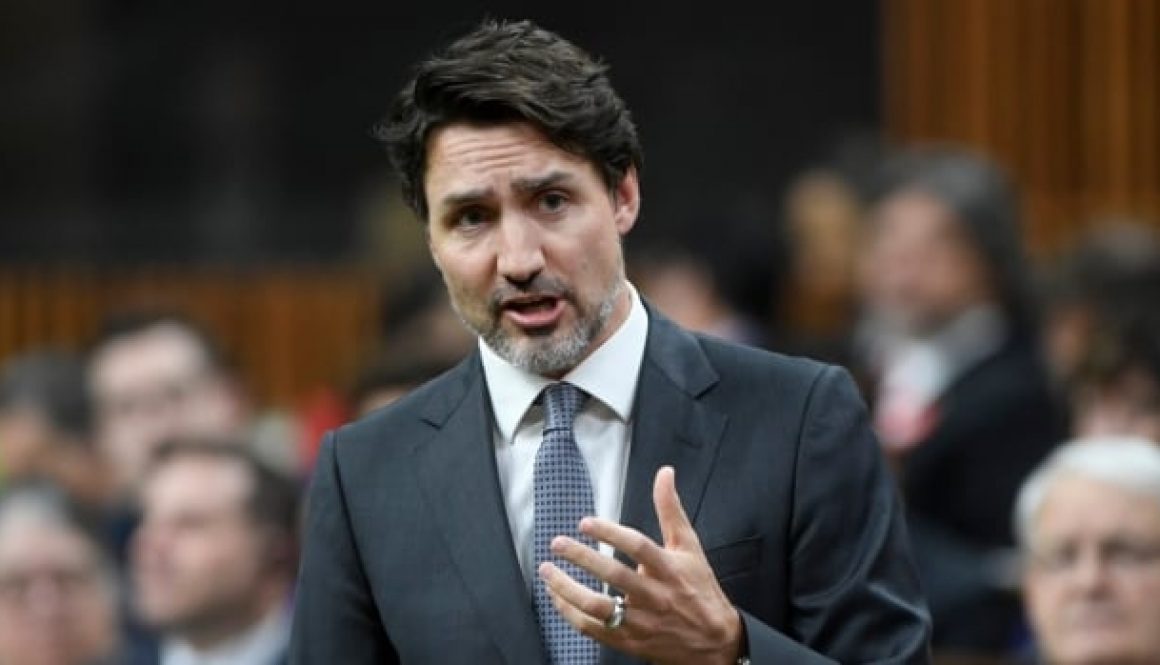
Prime Minister Justin Trudeau says the federal government will warn Canadians against international travel and is considering tightening the border to some international travellers.
During an interview with Radio-Canada’s Montreal morning show on Friday, Trudeau said the government is not closing the door to any idea and is assessing the situation on a day-to-day basis.
Asked if the government will close the Canadian border, Trudeau said: “We are in the midst of looking at this.”
“We’re in the midst of evaluating day-to-day what to do,” he said.
“As you’ve seen, there are recommendations not to travel outside of Canada. We’re in the midst of co-ordinating with the Americans, obviously, on our borders, on our actions. We’ll continue to evaluate what we can do and how we can keep Canadians in security and we won’t close the door on any idea.”
U.S. President Donald Trump announced Wednesday evening that the U.S. was banning travellers from most parts of Europe, the same day the World Health Organization declared the global outbreak a pandemic.
The State Department also issued a global health advisory cautioning U.S. citizens to “reconsider travel abroad” due to COVID-19.
Trudeau is in self-isolation at home as his wife, Sophie, has tested positive for COVID-19.
Trudeau also said the government is looking at a set of common national guidelines to limit the spread of the coronavirus across the country.
On CBC Radio’s The Current, Trudeau said the government will make a recommendation to Canadians not to travel internationally right now. An announcement on that will likely come later today, he said.
Trudeau said the government is also considering income-support measures to ensure people aren’t worried about money when concerned about their own health and the health of their loved ones.
“We’re going to be putting in place measures to support people to make sure that they can make ends meet, that they can focus on their families while we’re going through a very difficult time economically,” he told host Matt Galloway.
On the border, Trudeau said steps that have been taken to date have “worked quite well” in limiting the number of cases; additional measures may now be required.
“We seem to be approaching a different phase right now and we will make sure that we follow all the advice of our very top experts,” he said.
Trudeau will address the nation today from self-isolation as the number of Canadians who have tested positive for the novel coronoavirus continues to grow — including his wife, Sophie Grégoire Trudeau.
His speech comes as Parliamentarians decide whether to take the unprecedented move of suspending Parliament because of the COVID-19 pandemic.
The Commons is sitting today before a previously planned one-week break, but discussions are underway about whether that should be extended.
The Board of Internal Economy met twice Thursday behind closed doors but did not announce a decision. Sources say a plan will be revealed in the House of Commons on Friday.
The provinces have already made moves in a bid to slow the spread of the virus. The Ontario government has decided to shut schools and upcoming jury trials, while Alberta’s chief medical officer of health is recommending cancelling all public gatherings of more than 250 people.
Trudeau will also speak to provincial and territorial premiers about COVID-19 this afternoon over the phone after the first ministers meeting was cancelled.
A statement from the Prime Minister’s Office late Thursday said Grégoire Trudeau’s symptoms remain mild and the prime minister shows no symptoms, but he’ll remain in isolation for two weeks to be safe.
On The Current, Trudeau confirmed he is still showing no symptoms of the virus and has been working from home speaking with cabinet ministers and other world leaders. His wife is following the advice of doctors to get lots of rest and drink plenty of fluids, he said.
As of early Friday morning, provinces in Canada were reporting almost 160 presumptive and confirmed cases.
On Wednesday, federal Health Minister Patty Hajdu said experts suggested the coronavirus could infect 30 to 70 per cent of the population. The World Health Organization (WHO) has formally declared the outbreak a pandemic.
The government issued a wide-ranging tender Thursday asking suppliers for products and services to fight the outbreak. Ottawa says it needs things like disposable surgical masks, gowns, hand sanitizer and nitrile gloves.
It’s also looking to hire more nurses and security guards.
This content was originally published here.
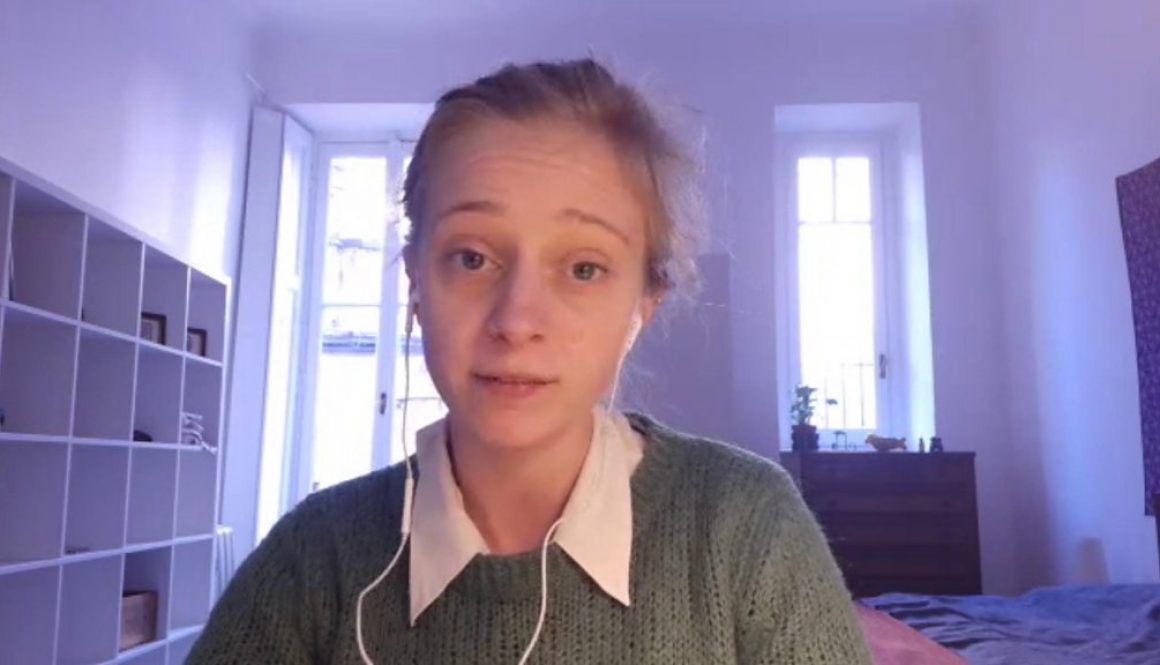
The number of people to have died from the coronavirus in Italy has shot up by 133 in a day to 366, officials say.
The total number of infections leapt 25% to 7,375 from 5,883, according to the Civil Protection agency.
The jump in figures comes as millions adapt to radical measures introduced on Sunday in an attempt to contain the outbreak.
Up to 16 million people in Lombardy and 14 provinces need special permission to travel under new quarantine rules.
Prime Minister Giuseppe Conte also announced the closure of schools, gyms, museums, nightclubs and other venues across the whole country.
The restrictions will last until 3 April.
The latest figures mean Italy now has the highest number of confirmed infections outside China, where the outbreak originated in December. It has overtaken South Korea, where the total number of cases is nearing 7,400.
Italy has one of the world’s oldest populations. The virus is particularly dangerous for the elderly and those with underlying health conditions.
Among the latest people to test positive in Italy is the army’s chief of staff. Salvatore Farina said he felt well and was self-isolating.
The strict new quarantine measures affect a quarter of the Italian population and centre on the rich northern part of the country that powers its economy.
The health system is under immense strain in Lombardy, a northern region of 10 million people, where people are being treated in hospital corridors.
“We want to guarantee the health of our citizens. We understand that these measures will impose sacrifices, sometimes small and sometimes very big,” Prime Minister Conte said as he announced the measures in the middle of Saturday night.
Under the new measures, people are not supposed to be able to enter or leave Lombardy, where Milan is the main city.
The same restrictions apply to 14 provinces: Modena, Parma, Piacenza, Reggio Emilia, Rimini, Pesaro and Urbino, Alessandria, Asti, Novara, Verbano Cusio Ossola, Vercelli, Padua, Treviso and Venice.
The UK Foreign Office advises against all but essential travel to these areas.
Some transport in and out of the regions affected continued on Sunday. Flights still arrived at Milan’s Malpensa and Linate airports, though some scheduled flights were cancelled.
However, Italy’s national carrier Alitalia said it would suspend all operations from Malpensa from Monday and Linate would only serve domestic routes. International flights would continue to and from Rome.
The World Health Organization (WHO) chief Tedros Adhanom Ghebreyesus praised Italy for making “genuine sacrifices” with the restrictions. Until Sunday only about 50,000 people in northern Italy had been affected by quarantines.
Last week the government announced the closure of all schools and universities across the country for 10 days.
The number of infections worldwide is more than 107,000, with about 3,600 deaths.
Most of the fatalities have been in China. But the country on Monday reported no new locally transmitted infection outside of Hubei province, where the outbreak began, for the second consecutive day.
Although this indicates that the spread there is slowing, senior officials warned against reducing vigilance.
In South Korea officials reported the lowest number of new cases in two weeks.
Iran, one of the worst hotspots outside China, has now confirmed 6,566 infections and 194 deaths.
However, the real figure is feared to be much higher. One report on Sunday, quoting a government envoy, said there had been 200 deaths in the northern Gilan province alone – but the figures were later removed.
In France, the virus is spreading among MPs. Two more members of the National Assembly have tested positive, officials said late on Sunday.
In total four deputies have been infected. Also on Sunday France reported 1,126 cases, a 19% increase in a day and the second largest number of infections in Europe after Italy.
The French government has banned gatherings of more than 1,000 people.
In other developments:
In the US more than 500 people have been diagnosed with Covid-19 in 30 of the country’s 50 states, and the death toll is 21.
Among other countries to report a rise in the total number of cases are: Germany (939); Spain (589); the UK (273); the Netherlands (265).
Albania, Bulgaria, Colombia, Costa Rica, the Maldives, Malta, and Paraguay have, meanwhile, all reported their first cases. meanwhile, all reported their first cases.
Have you or someone you know been affected by coronavirus? Share your experiences by emailing .
Please include a contact number if you are willing to speak to a BBC journalist. You can also contact us in the following ways:
This content was originally published here.
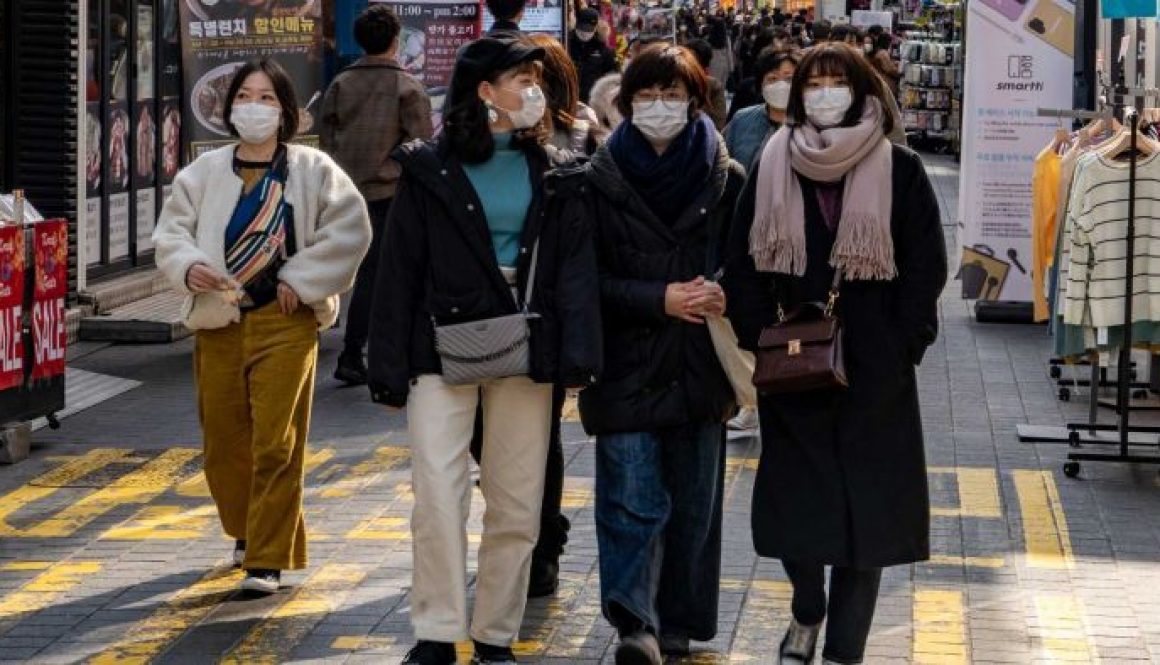
Updated
March 05, 2020 15:13:16
The Federal Government has expanded its coronavirus travel ban to include South Korea, and added additional precautions for travellers from Italy, amid fears about the spread of the disease.
Prime Minister Scott Morrison has also confirmed that the existing ban on foreign nationals travelling from China and Iran to Australia has been extended for another week.
The revised bans will be in place until Saturday, March 14 but the Government will review the situation within a week to determine if the travel restrictions need to be extended further.
Foreign nationals who have been in mainland China, Iran and South Korea are not allowed into Australia for 14 days from the time they left those countries.
Australian citizens and permanent residents will be able to enter Australia, but need to isolate themselves for a fortnight.
Mr Morrison said travellers from Italy would face “advanced screening measures”, which means they will be asked more questions at check-in and have their temperatures checked on arrival in Australia.
The Government has also upgraded its travel advice to South Korea and is now urging Australians to reconsider their need to travel to the country.
It has offered stricter travel advice for Daegu, a hotspot for coronavirus in South Korea, and urged Australians to not travel there.
Mr Morrison said South Korea posed a greater risk because it had five times the number of passengers travelling to Australia compared to Italy.
He said Cabinet’s national security committee expanded the travel restrictions after receiving an update from state and federal chief medical officers.
“The reason we have taken this decision is because of the high level of visitation we are seeing from Korea, than we have seen come from Italy, and the ability to immediately put in place the enhanced screening measures for Italy,” Mr Morrison said.
“To do that [for] Korea would be far more difficult.
“So that ban is put in place because it affords the best protection and enables us to slow down the rate of transmission.”
There are now more than 50 recorded cases of COVID-19 in Australia.
Chief medical officer Brendan Murphy said he was “very worried” about the risk of the disease being further imported to Australia from Iran.
Beyond China and Iran, he said South Korea and Italy posed the highest risk to Australia.
“We do know we will get more cases,” Professor Murphy said.
The new travel restrictions come as the head of Australia’s Department of Treasury has flagged an urgent need for targeted stimulus in response to the coronavirus crisis.
He told Senate estimates the virus would wipe at least 0.5 percentage points off growth in the March quarter, more than double the predicted impact of the devastating bushfires.
If the Government had imposed a travel ban on Italy, it might have had implications for the Australian Grand Prix in Melbourne next weekend.
Mr Morrison said it was a matter for the Victorian Government to manage how South Korean participants in Formula One race, or visitors coming to it, would be affected.
The Government has previously flagged it was considering a targeted stimulus package for the education, tourism and export sectors as they battled the financial toll of the coronavirus.
Mr Morrison on Thursday said the Government was in the final stages of that economic response.
“It will have an important focus on keeping people employed and supporting jobs,” he said.
“It will have a focus on keeping business in business so those businesses can support those jobs and the incomes of Australians. And it’ll have a focus on ensuring we bounce back better on the other side of this.”
This content was originally published here.
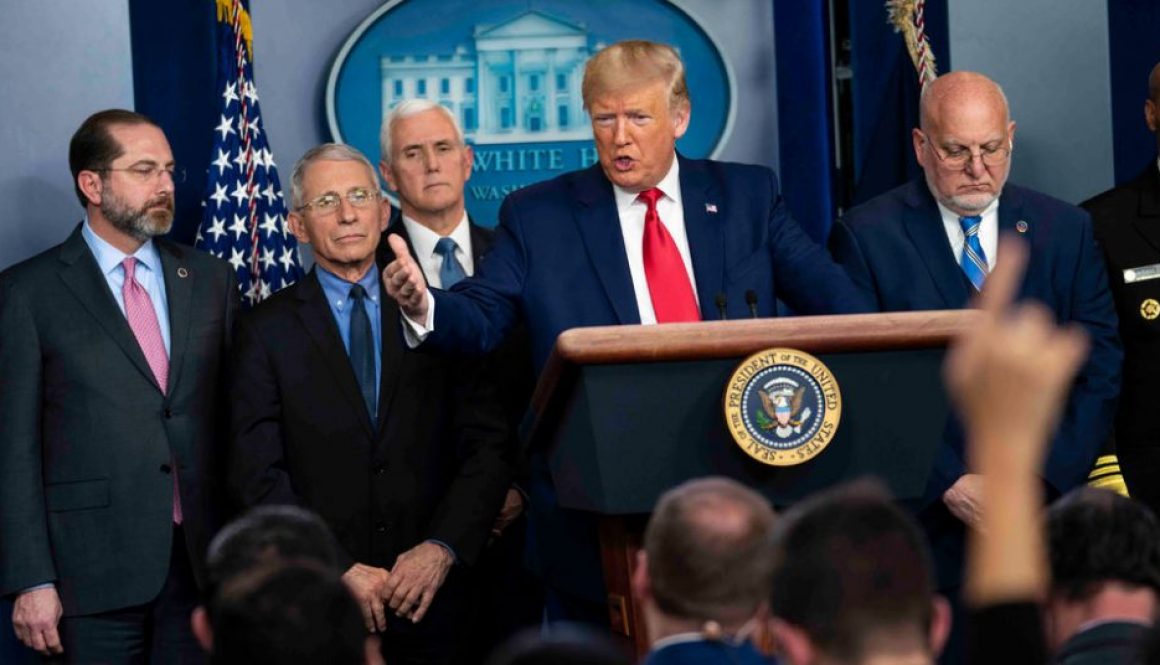
In his latest comments, Mr. Xi tried to look beyond the immediate crisis, laying out areas where he wants changed policy. These included:
Improved health services. China has been building a safety net of medical insurance for citizens, but the expense and inadequacies of basic health care remain a source of public ire — and a problem highlighted by the epidemic. Mr. Xi signaled that the government would try to channel more spending to ease those problems. “Don’t let small ailments brew into major epidemics,” he said.
That would entail more spending on medical training, especially for general practitioners, he suggested. Chinese hospitals often refer patients to specialists, even for common illnesses that general practitioners could easily treat.
Cracking down on the illegal trade in wildlife. Scientists generally believe that the coronavirus may have spread from a wholesale market in Wuhan, the capital of Hubei Province, where some vendors sold wildlife. They say the pathogen may have jumped from bats to other animals, possibly pangolins, and to humans.
“Resolutely ban and harshly attack the illegal market and trade in wildlife,” he said in the comments published Saturday. “Contain major public health hazards at their source.”
Improved emergency preparations. The Chinese government has touted its vast mobilization of officials, doctors and medical resources to fight the epidemic. In his latest comments, Mr. Xi said that even so, China could do better. He called for clear lines of command in response to public health emergencies.
As Mr. Xi often does, he emphasized the potential of new, data-driven technology to improve the government’s response. “We must encourage the application of big data, artificial intelligence, cloud computing and other digital technology to play a better supporting role in monitoring and analyzing outbreaks, tracing viruses, prevention and treatment, and allocating resources,” he said.
No signs of liberalization. One notable thing was what Mr. Xi did not say. Many Chinese people, including health experts, have said that the epidemic illustrated the risks to public health created by official censorship, which early in the epidemic led to doctors being silenced by the authorities after they discussed the outbreak with colleagues. One of those doctors, Li Wenliang, himself died from the virus, making him into a martyr-like symbol of the costs of speaking out.
This content was originally published here.
Prime Minister Scott Morrison has moved Australia into pandemic mode, as the coronavirus spreads to 42 countries across the world.
“We’re effectively operating now on the basis that there is one, a pandemic,” Morrison said, declaring the government was now activating its emergency plan.
Watch the video above
“In the last 24 hours … the data regarding the rate of transmission of the virus outside of China is fundamentally changing the way we need to now look at how this issue is being managed here in Australia,” he said.
“We believe the risk of a global pandemic is very much upon us and as a result, as a government, we need to take the steps necessary to prepare for such a pandemic.”
Morrison said the decision to move ahead before the World Health Organisation declared an official pandemic was made in consultation with Australia’s chief medical officer, Brendan Murphy.
The mainland China travel ban has been extended to March 7, meaning foreign nationals who have been in China must spend at least 14 days in a third country before gaining entry to Australia.
Australian citizens and permanent residents returning from China are permitted entry, but must self-isolate for two weeks.
Morrison said implementation of the emergency plan did not mean people would be stopped from going about their normal business.
“There is no need for us to be moving to having mass gatherings of people stop,” he said.
“You can still go to the football and the cricket and play with your friends down the street.
‘To stay ahead of it we need to now elevate our response.’
“You can go to the concert and you can go out for a Chinese meal.
“You can do all of these things because Australia has acted quickly.
“Australia has gone ahead of (WHO) at this point in time.
“But to stay ahead of it we need to now elevate our response to the next phase.”
Morrison said Health Minister Greg Hunt would meet state and territory health ministers on Friday to discuss the next steps.
Australia Border Force was also being consulted on how best to increase monitoring and security at all the country’s ports of entry.
Education ministers will also be asked to look at what steps can be taken to further protect students, Morrison said.
As Morrison was addressing the media in Canberra with the coronavirus update, NSW’s Health Minister, Brad Hazzard, issued a separate statement.
He urged all individuals and businesses to take immediate steps to prepare for a pandemic, warning the virus could take hold in the state just as winter flu season hits.
“Businesses (must) look at strategies for keeping workers safe with simple measures such as alcohol hand rub in the workplace, stress the importance of staying home when sick, and use technologies that allow people to work from home where necessary,” he said.
NSW’s Chief Health Officer Kerry Chant urged people to visit their GP for minor injuries and illnesses, to ensure hospital emergency departments did not become clogged with non-urgent cases.
“While the few COVID-19 cases in NSW to date have been mild, the global spread of the virus, coupled with flu season fast approaching, means the situation for our hospitals could change quickly,” Dr Chant said.
“So we’re asking everyone to plan now.”
What is the coronavirus?
Coronaviruses are a group of viruses that can cause a range of symptoms including a runny nose, cough, sore throat and fever. Some are mild, such as the common cold, while others are more likely to lead to pneumonia.
The latest strain was discovered in the Chinese province of Wuhan.
How do you get coronavirus?
China says the virus is mutating and can be transmitted through human contact.
It’s primarily spread through a sick person coughing or sneezing on someone but a person could also become infected through contact with the virus particles on a surface, NSW Health warns.
What are coronavirus symptoms?
Symptoms include fever, cough and difficulty breathing. Most of those affected are older people and those with underlying health conditions.
How do you treat coronavirus?
As it stands, there is no vaccine for the virus and because it is new, humans have not been able to build immunity to it.
A group of Melbourne researchers have been tasked with finding a vaccine, while China is testing the HIV drug Aluvia as a treatment.
How do I protect myself from coronavirus?
WHO’s standard recommendations:
If you’d like to view this content, please adjust your .
To find out more about how we use cookies, please see our Cookie Guide.
This content was originally published here.
Australians are being urged to exercise a “high degree of caution” if planning to travel to Japan or South Korea, in the wake of increasing cases of coronavirus in the region.
But health minister Greg Hunt has ruled out more stringent travel restrictions for the time being.
Watch the video above
The news comes as the number of cases of COVID-19 rises to more than 700 in Japan and more than 600 in South Korea, with at least six deaths.
Hunt announced the Level 2 travel advisories for the two countries on Monday, as 47 cases of the virus among Australians were confirmed among passengers on the cruise ship the Diamond Princess, quarantined in Yokohama.
These passengers remain in Japanese hospitals while a further 170 passengers have been flown back to Australia, after being evacuated off the ship.
Since their arrival at the Howard Springs quarantine facility near Darwin, seven of those have tested positive to COVID-19.
Australia’s chief medical officer Brendan Murphy said fresh outbreaks of the virus reported in northern Italy and in Iran were also cause for concern.
But he stressed that, in Australia, there had so far not been a single case of transmission of the disease within the community.
Murphy said while the government was not ruling anything out, travel restrictions to countries other than China, which currently operates on a Level 4 “do not travel” advisory, were not on the immediate horizon.
“You cannot isolate a country from a large number of countries, you have to look at the proportional risks,” he said.
As of Monday, 78,973 confirmed cases of COVID-19 have been recorded worldwide and 2,466 lives lost from the virus.
This content was originally published here.
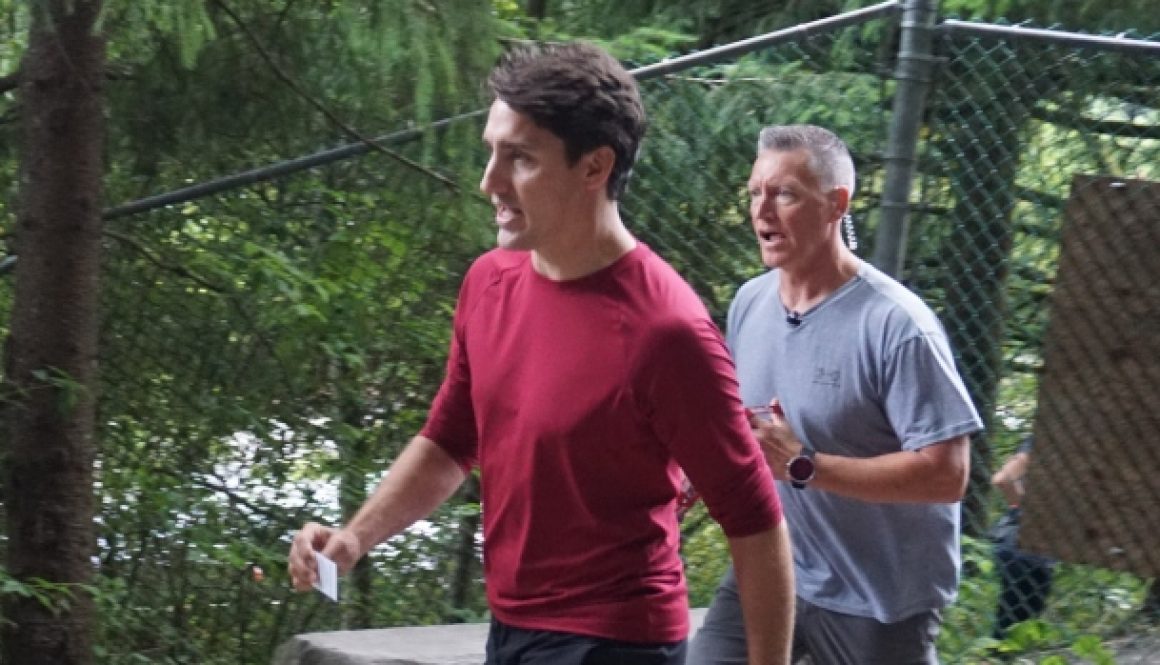
VANCOUVER —
Canadian taxpayers have been stuck with the bill for Prime Minister Justin Trudeau’s travel by military aircraft, even when that travel combines official government business with Liberal party events, a CTV News Investigation reveals.
The investigation, in connection with Bob Mackin of theBreaker.news, examined the prime minister’s seven trips to British Columbia between May and August of 2019, and focused on a two-day trip in late May, and another in late August.
In both cases, while the trips combined official government announcements and either Liberal party fundraisers or the production of a Liberal party campaign video aired during the election period, the Liberal Party of Canada did not reimburse the equivalent cost of the prime minister’s air travel, or a portion of it, as has become standard practice when the prime minister, for example, takes his family on vacation.
There is no indication the mixing and matching of official government and party business on the same trip violates any government guidelines, or election or campaign finance laws. And both trips took place before the official campaign period had begun.
But Aaron Wudrick, federal director of the Canadian Taxpayers Federation, questions whether political parties should be paying back at least part of the prime minister’s transportation bill.
“I think if you’ve done three events, and one of them is a partisan event, splitting the bill three ways is a fair way to do it,” Wudrick said.
On Aug. 29, the prime minister and seven members of his staff flew from Ottawa to Vancouver onboard a government-owned Challenger jet, records obtained from the Department of National Defence through a Freedom of Information request show.

This report shows the Prime Minister’s itinerary and passenger manifest for an Aug. 29-30, 2019, trip to B.C. aboard a government jet. Source: Department of National Defence
Less than two hours after touching down, the prime minister appeared alongside Premier John Horgan at a BC Hydro facility in Surrey to announce a memorandum of understanding “to affirm their joint commitment to power British Columbia’s natural gas production and (LNG) sectors with clean energy.”
The following morning, Aug. 30, Trudeau met with Vancouver Mayor Kennedy Stewart to discuss the housing crisis and opioid emergency, among other topics.
Both events were on the prime minister’s official schedule.
And before departing for Ottawa that afternoon, Trudeau wedged in a video production shoot on the Grouse Grind – a gruelling hike that is well-known in Metro Vancouver – for a Liberal party campaign video that featured the prime minister, and would air beginning in late September.
Then-Minister of Fisheries, Oceans, and the Canadian Coast Guard Jonathan Wilkinson, and Defence Minister Harjit Sajjan, can be spotted in the final edited video.
Liberal MP candidates Terry Lake and Tamara Taggart were also among those who took part.
Records obtained from the Department of National Defence show the total cost for the prime minister’s return flights from Ottawa for the two-day trip, when calculated using a per-hour average for his total travel on government Challenger jets for the month August, at $54,115.08.

This report shows the prime minister’s total travel by government Challenger aircraft in August 2019, along with the total cost. Source: Department of National Defence
Two months earlier, on May 21, 2019, records show the prime minister and eight of his staff flew to Kamloops, for the first leg of a trip that would later take them to Vancouver and on to Saskatchewan.
That afternoon, Trudeau met with government leaders and wildfire emergency response personnel at Kamloops City Hall, an event that was described as “private meetings” on his official schedule.
That evening, he appeared alongside Terry Lake at a campaign-style rally, to announce Lake as the Liberal candidate for the Kamloops-Thompson-Cariboo, at one point taking the stage with Lake and hoisting his hand in the air in front of a glowing crowd.
Later than evening, National Defence records show the prime minister and eight staffers flew to Vancouver. The government plane returned to Kamloops shortly after, with no one listed on the official manifest.
Its third leg that evening took it back to Vancouver, with eight passengers on board, including MPs Jonathan Wilkinson and Carla Qualtrough, and Amanda Campbell a Regional Adviser in the Prime Minister’s Office.
The next morning, in Vancouver’s Stanley Park, Trudeau announced the renewal of the Canadian Coast Guard fleet.
Later that morning, the PM attended a Liberal party fundraiser at the Opus Hotel in Yaletown, while Trans Mountain pipeline expansion opponents rallied outside.
That evening, he attended a second party fundraiser at the Neptune Palace restaurant on Marine Drive.
Fundraising event reports filed by the Liberal party with Elections Canada indicate a total of 145 attendees between the two fundraisers, with each person paying between $250 and $1,500.
• Read the fundraising event report from Elections Canada for the Opus Hotel event
• Here’s the report for the Neptune Place fundraiser
Records from National Defence show the prime minister then flew to Sakatchewan the following morning.
And those same records also show the total cost for the Ottawa-Kamloops, Kamloops-Vancouver, Vancouver-Kamloops, and Kamloops-Vancouver flight segments, calculated using a per-hour average for the prime minister’s total travel by military jet in May, at $40,022.77.
The number doesn’t sit well with the Aaron Wudrick at the Canadian Taxpayers Federation.
“A fundraiser for the Liberal party is not government business and Canadian taxpayers should not have to subsidize it,” Wudrick said.
When CTV News reached out to the Liberal Party of Canada to ask about both trips, Braeden Caley, the party’s senior director of communications, explained that the party reimburses the government the “equivalent economy airfare” only in cases where the prime minister travels solely for party activities.
“In other cases where Mr. Trudeau has travelled exclusively for campaign events or other party activities, the (party) reimburses the (government) for the replacement value of the prime minister’s travel…as per the usual procedures,” Caley wrote via email.
It is a widely understood practice that elected officials like the prime minister, who must travel using government aircraft for security reasons, use the lowest economy airfare equivalent to offset their air travel when not traveling on official government business, for example when they or family members travel for vacation.
When pressed if the Liberal party reimbursed or planned to reimburse any portion of the prime minister’s travel for the May or August 2019 trips to B.C., Caley wrote: “No, as the events you’ve mentioned were added to other government travel plans.”
Wudrick takes issue with that.
“I do not think a trigger point should be only ‘exclusively partisan,'” Wudrick said.
“Because what you could have then is one government announcement, and seven partisan events, and it would not qualify then for reimbursement,” he said.
The Canadian Taxpayers Federation also questioned, broadly speaking, whether this encourages elected leaders and their staffers to build official government photo-ops and announcements around partisan events, “rather than the other way around.”
There is no suggestion that any aspect of the prime minister’s two trips to B.C. violates election or campaign finance laws or parliamentary guidelines.
Even if the Liberal party decided to reimburse the federal government for the prime minister’s August 2019 trip, which included the production of the Grouse Grind campaign video, taxpayers would still be on the hook for five figures.
The widely accepted practice is to use the lowest economy airfare for the travel dates. CTV News used the same dates for August of 2020, and calculated a return airfare from Ottawa to Vancouver of $556.
That means taxpayers would still be on the hook for $53,559.
And if the Liberal party also submitted reimbursements for the seven additional staffers on board, as it says it does in cases where staff travel on flights with Mr. Trudeau solely for campaign events or other party activity, that would still leave taxpayers with a bill just under $50,000.
Wudrick is hopeful that focus on government spending may trigger a bigger conversation about ministerial-level travel, especially in a time when Ottawa is especially sensitive to carbon emissions.
“Do we really need to be jetting across the country, essentially for photo ops?” he questioned.
And when asked whether he thinks the Liberal party should cough up at least the equivalent economy airfare for the prime minister’s two trips, what Wudrick calls “the bare minimum,” he answered:
“We think the public is the best judge of whether or not something passes the smell test.”
This content was originally published here.
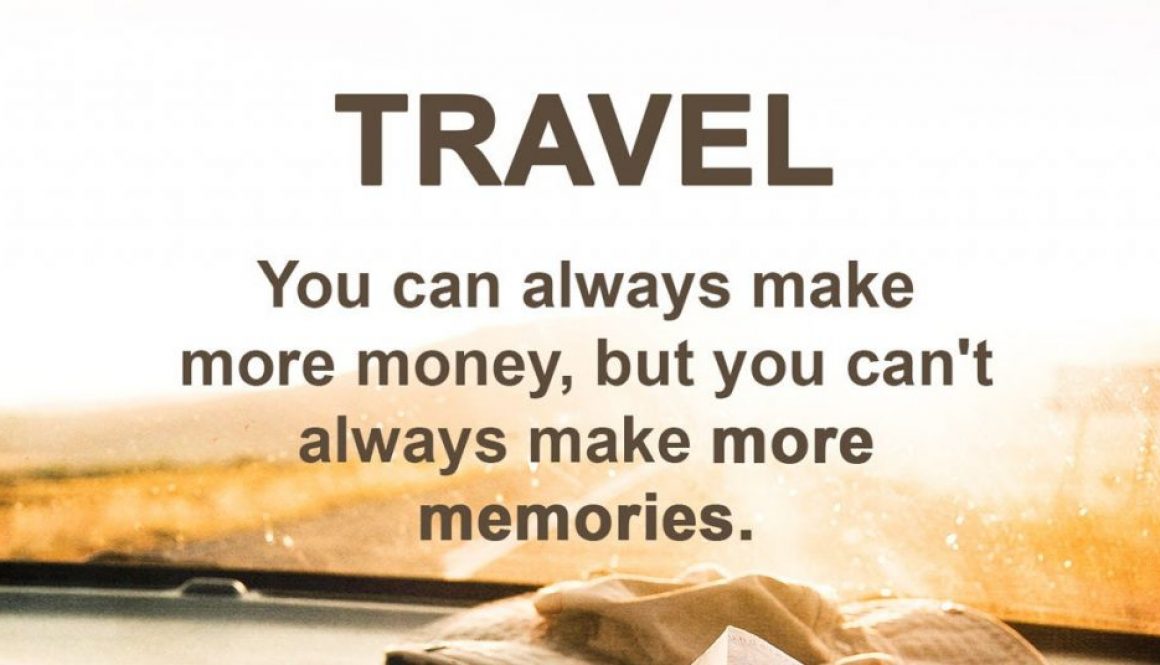
And even if it does include a pricey ride, the truth is money returns. Time, however, doesn’t.
Traveling is one of the most incredible things we are able to do in this world. It makes us realize that no matter how much we think we know, there is always more to see, explore, and learn. Unfortunately, many people stay stuck in one place because they believe taking a trip will cost them a lot, and it wouldn’t be worth it. But they couldn’t be more wrong.
Here are six solid reasons why spending your money on traveling is probably one of the best investments you’ll ever make.
“Travel opens your heart, broadens your mind, and fills your life with stories to tell.” –Paula Bendfeldt
Spending some time away from the place you call home can help you discover sides of yourself you never knew were there. That’s because when you’re out of your comfort zone, your reactions and your perceptions are not influenced by familiar surroundings or people. When you’re on the road, especially in case you’ve decided to take a solo trip, you can finally be alone with your thoughts. This will definitely lead you in the right direction and will help you increase your self-awareness and rediscover yourself.
While traveling, you inevitably meet different people with various cultural characteristics. The greatest thing about this is that you get to make friends from all over the world! This helps you expand your perspective and enrich your mindset. Moreover, traveling gives you the chance to establish a whole global network of friends. You would be surprised how many of those friendships will last way beyond your trip. Therefore, spending your money on wandering around the world is going to incredibly enhance your social life. Besides, the people you meet on your journey will help you see the world through their eyes, and undoubtedly, this experience will be absolutely lifechanging.
If you never go, you’ll never know. Traveling is the best way you can expand your knowledge of diverse cultures. It is also the greatest possibility for you to experience various lifestyles and to get to know different people’s core values. By getting in close proximity to different cultures, you can also develop greater tolerance, compassion, and empathy for other people. All these places you visit leave a small footprint in your heart. This makes you a better person on so many levels.
“Travel sparks our imagination, feeds our curiosity, and reminds us how much we all have in common.” – Deborah Lloyd
If you’re a traveler by heart, you would know that money can fill your pockets, but adventures can fill your soul. When you’re voyaging, cruising, hiking, road-tripping, or whatever type of travel you enjoy doing, you get used to the idea of taking risks. You become more daring, and the unknown doesn’t scare you anymore. Exploring the world makes you face your fears, which gives you the splash of adrenaline that makes you feel alive. Furthermore, you embrace the adventurer in yourself, and you become more open to the challenges life brings you.
Traveling inspires you to push your limits and break stereotypes you used to believe in. It widens your horizons, both physically and mentally. And as you travel more, your experiences teach you how to safely push your boundaries. In other words, traveling grows your ability to efficiently manage the risks you take. That’s because when you’re on the road, you put yourself in various unfamiliar situations. This sharpens your survival instincts and increases your awareness of your surroundings wherever you go.
Traveling not only expands your horizons, but it also leaves you with amazing memories. These memories turn into thrilling stories. And these stories become a part of who you are.
“So much of who we are is because of where we have been.”
William Langewiesche
After all, who doesn’t want to grow old and remember fantastic stories of the adventurous life they had? This is something worth spending your money on.
It is the investment that will enrich your being in the best ways possible. So, go get that plane ticket, and prepare yourself for a life full of exploration, learning, and improving.
Let the adventure begin.
This content was originally published here.